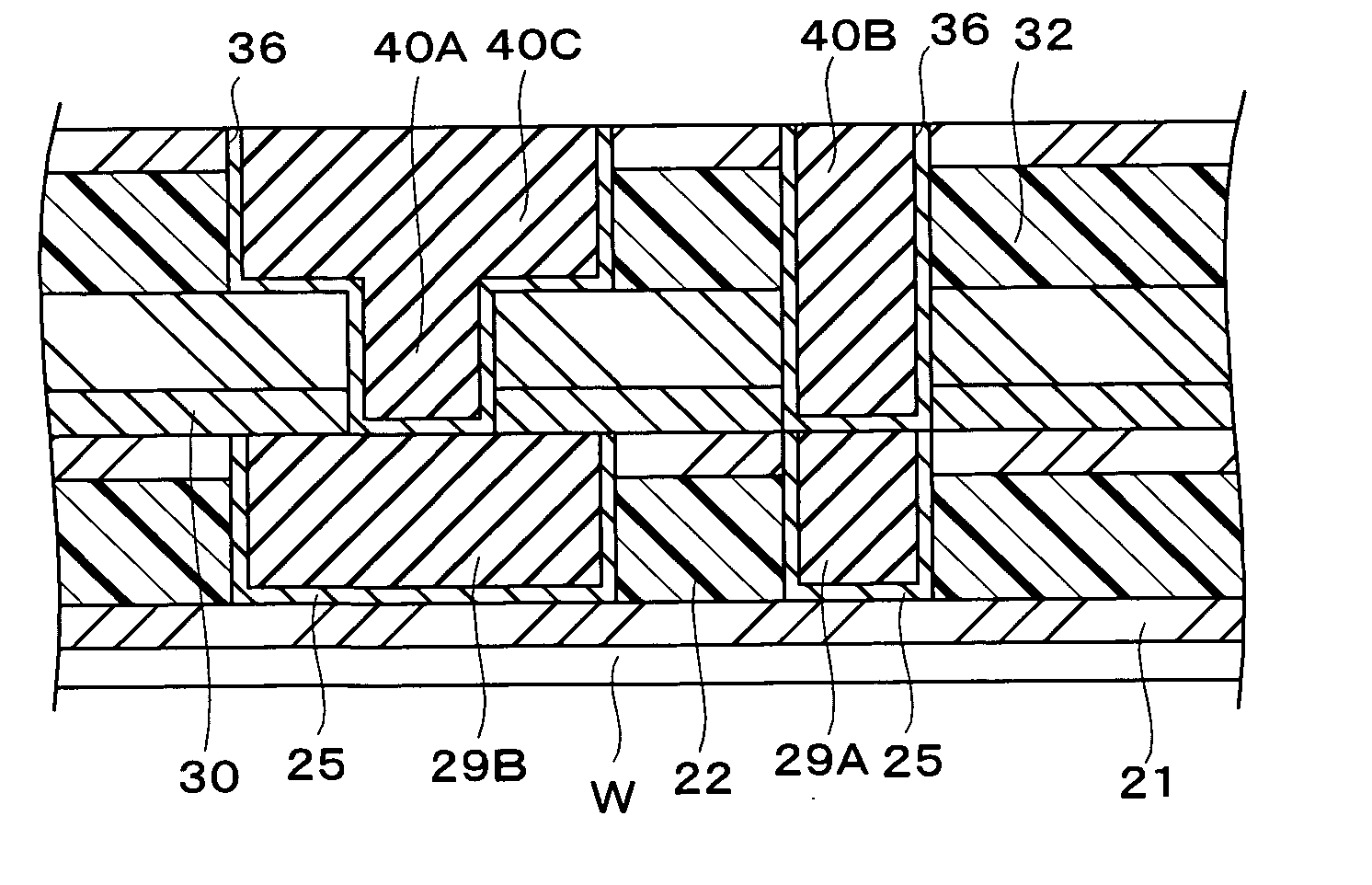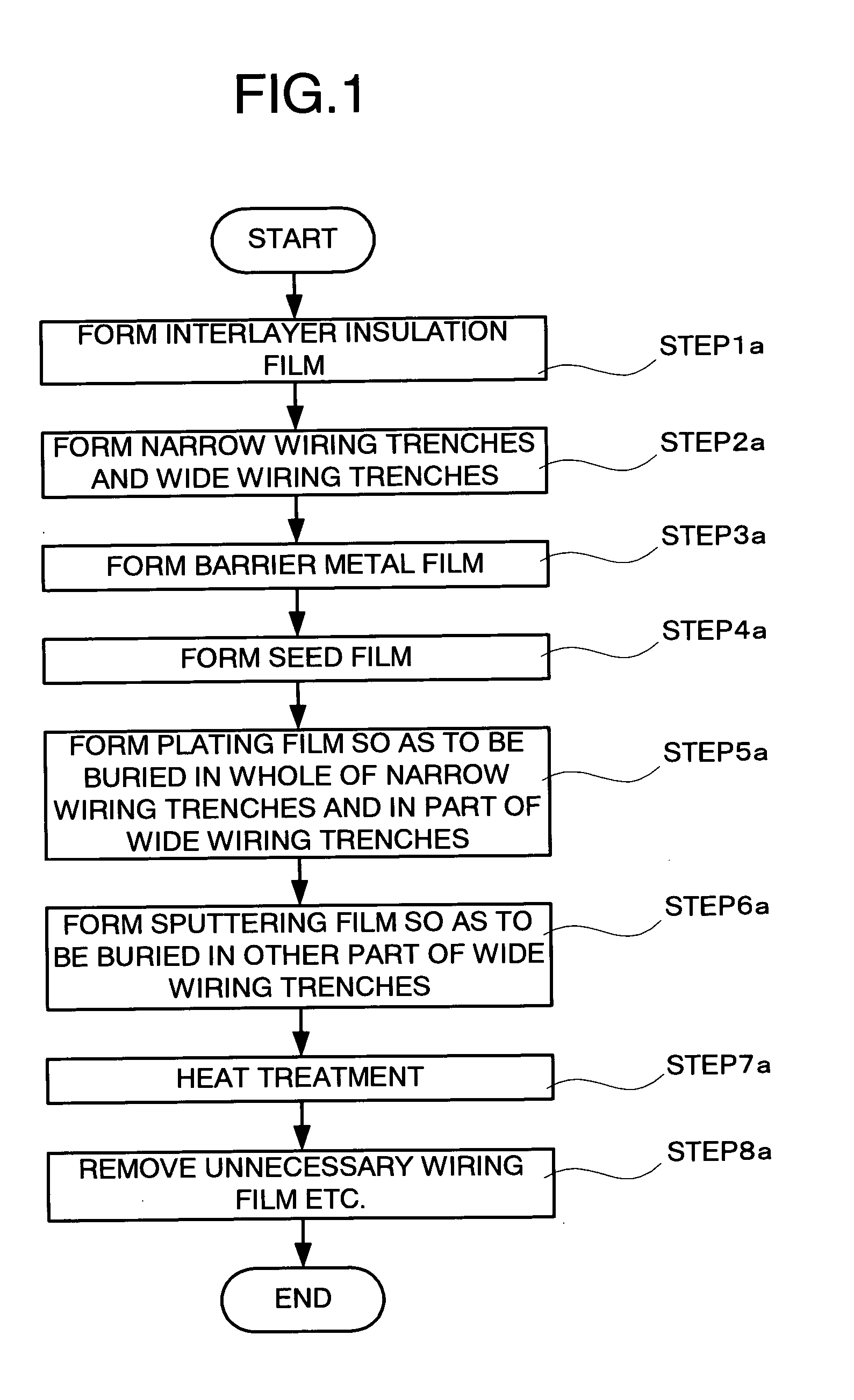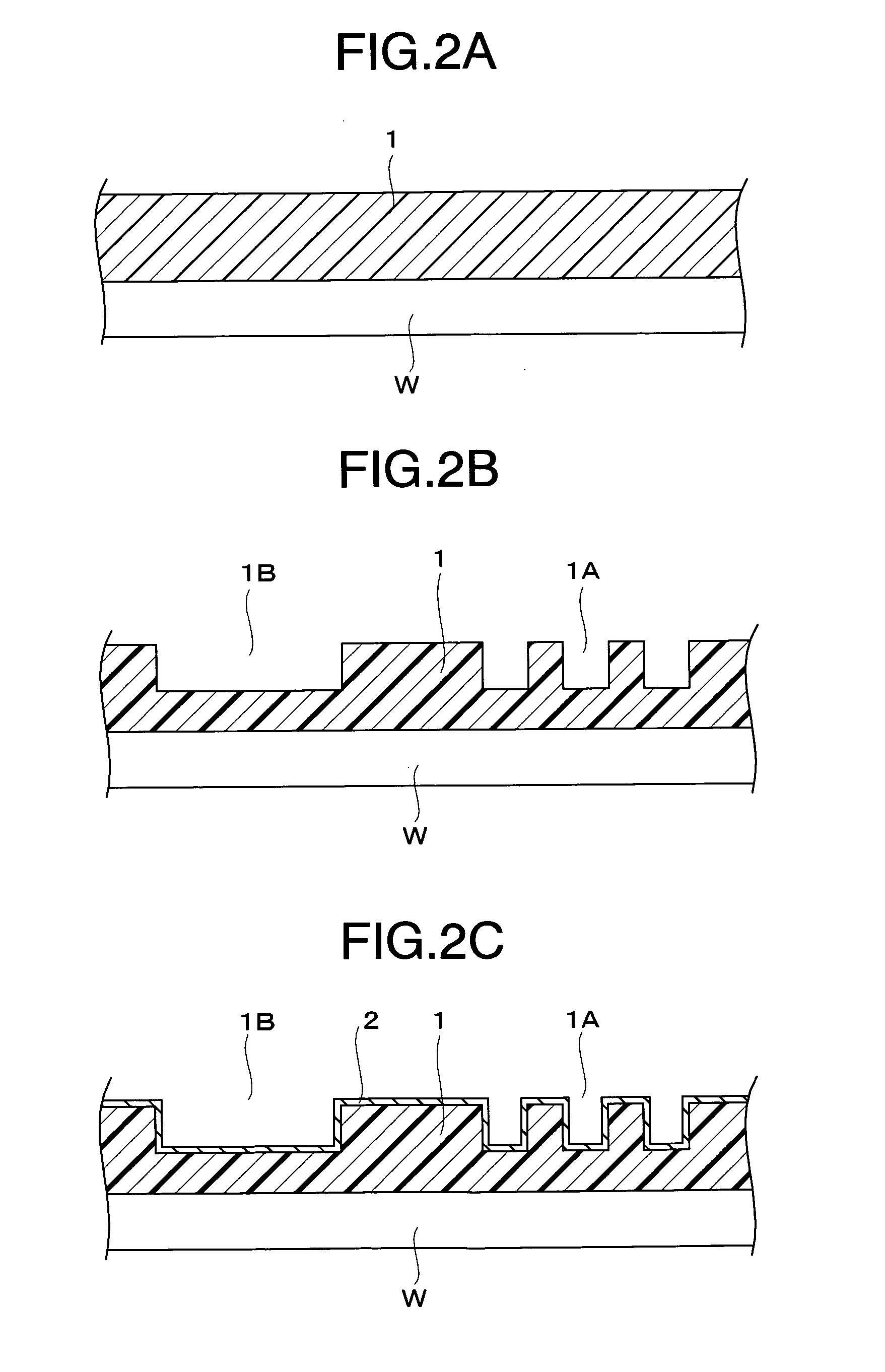Method of manufacturing a semiconductor device and semiconductor device
- Summary
- Abstract
- Description
- Claims
- Application Information
AI Technical Summary
Benefits of technology
Problems solved by technology
Method used
Image
Examples
first embodiment
[0023] Hereinafter, a first embodiment will be described. FIG. 1 is a flowchart showing a flow of manufacturing processes of a semiconductor device according to this embodiment, and FIG. 2A to FIG. 2H are schematic views showing the manufacturing processes of the semiconductor device according to this embodiment. formed on a semiconductor wafer W (hereinafter, simply referred to as a “wafer”) by, for example, chemical vapor deposition (CVD) or coating (Step 1a). Examples of a material composing the interlayer insulation film 1 are a low dielectric constant insulation film such as an organic Si oxide film, an organic resin film and a porous Si oxide film, a SiO2 film and so on.
[0024] After the interlayer insulation film 1 is formed, narrow wiring trenches 1A each with a width of 0.3 μm or less and wide wiring trenches 1B each with a width of more than 0.3 μm are formed in the interlayer insulation film 1 as shown in FIG. 2B, by a photolithography technique and reactive ion etching (...
experimental example 1
[0040] Hereinafter, an experiment example 1 will be described. In this experimental example, the impurity concentration in Cu films was measured and defect density in Cu wirings was measured.
[0041] In this experimental example, wafers formed by the following processes were used. After an oxide film was formed to a thickness of 20 nm on each Si substrate having an active portion, a SiOC-based low dielectric constant insulation film (interlayer insulation film) was formed to a thickness of 300 nm by CVD. Thereafter, wiring trenches (wide wiring trenches) each with a width of 4 μm and a depth of 250 nm were formed by lithography processes and RIE processes. Then, after resist removal by a wet etching process, a Ta film (barrier metal film) and a Cu film (seed film) were formed to 30 nm and 80 nm respectively by long throw sputtering. Next, by two kinds of film deposition methods, Cu films were formed. In a condition 1, a Cu film (plating film) was formed to a thickness of 210 nm by el...
second embodiment
[0045] Hereinafter, a second embodiment will be described. This embodiment will describe an example where a plating film is formed by supplying a plating solution at a supply rate of 15 L / min or higher while rotating a wafer at a rotation speed of 50 rpm or lower. Some of the same contents as those in the first embodiment will be omitted.
[0046]FIG. 3 is a flowchart showing a flow of manufacturing processes of a semiconductor device according to this embodiment, FIG. 4 is a schematic view showing the manufacturing processes of the semiconductor device according to this embodiment, FIG. 5 is a schematic view showing a forming process of a plating film according to this embodiment, FIG. 6 shows the correlation of the concentrations of Cu ions and additives relative to the distance from a surface of a wafer in plating by supplying a plating solution at a supply rate of 15 L / min or higher while rotating the wafer at a rotation speed of 50 rpm or lower, FIG. 7 shows the correlation of th...
PUM
 Login to view more
Login to view more Abstract
Description
Claims
Application Information
 Login to view more
Login to view more - R&D Engineer
- R&D Manager
- IP Professional
- Industry Leading Data Capabilities
- Powerful AI technology
- Patent DNA Extraction
Browse by: Latest US Patents, China's latest patents, Technical Efficacy Thesaurus, Application Domain, Technology Topic.
© 2024 PatSnap. All rights reserved.Legal|Privacy policy|Modern Slavery Act Transparency Statement|Sitemap



